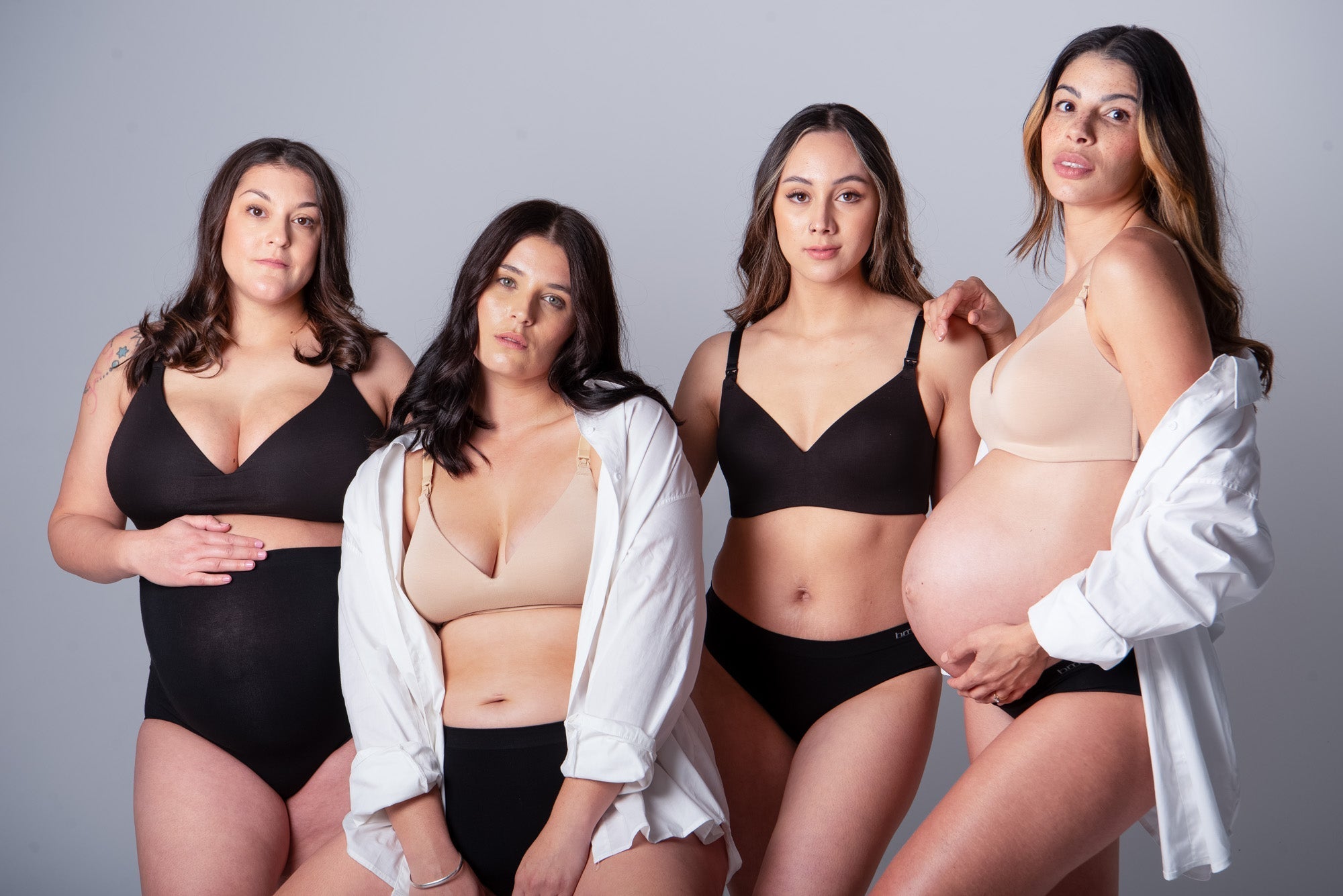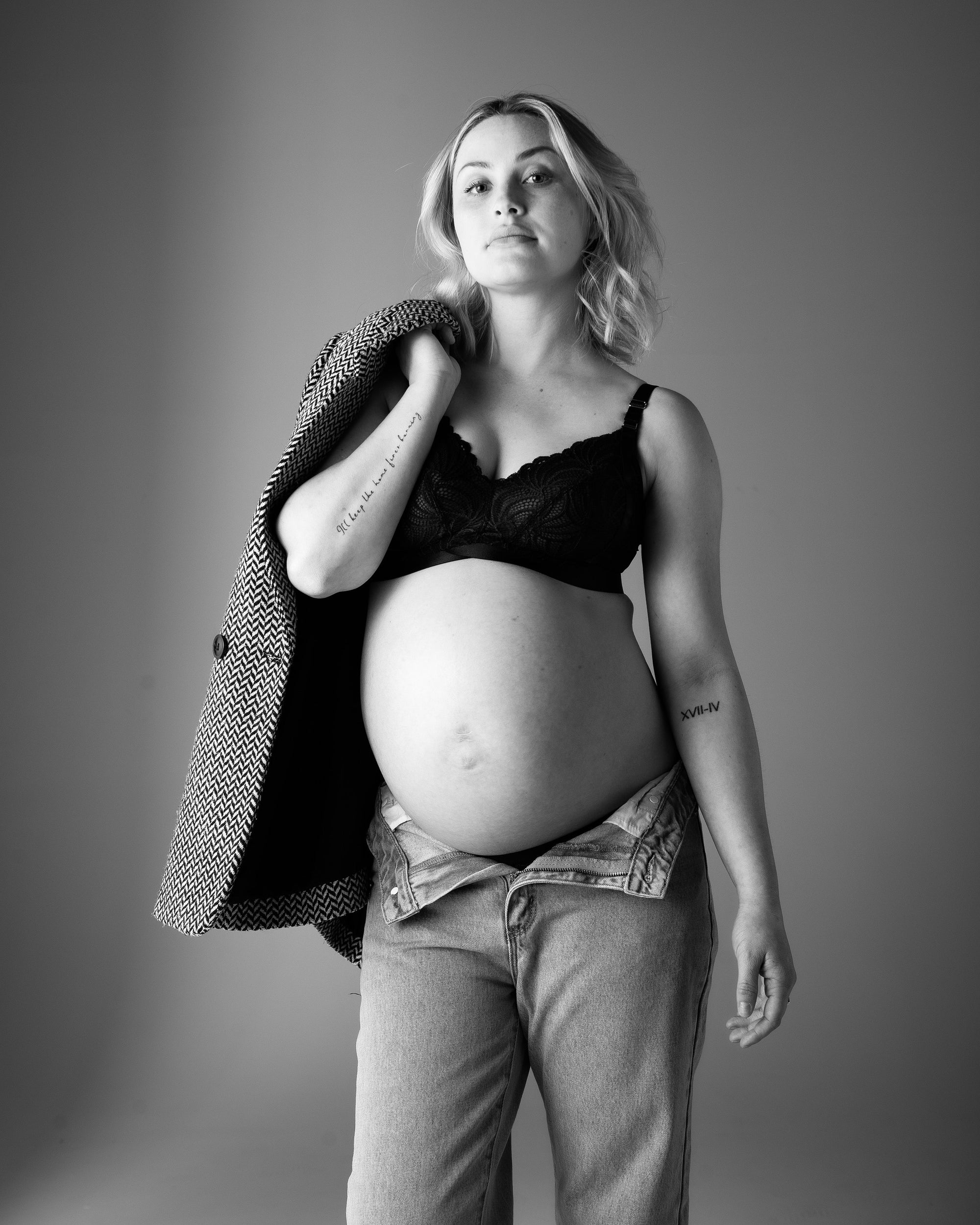Breast milk, often called "liquid gold," is truly remarkable. It provides infants with a perfect balance of essential nutrients: vitamins, minerals, proteins, and healthy fats. It's like a superpower potion that shields babies from infections and diseases, thanks to its antibodies and immune-boosting compounds. But wait, there's more! Breastfeeding also benefits mothers by aiding postpartum recovery, promoting uterine contraction, and reducing bleeding. It's an incredible gift!
Now, let's talk about the realness of breastfeeding. We get it, it can be challenging. We're here to say that "fed is best." If breastfeeding doesn't work out for you and your little one, please remember not to be too hard on yourself. As mothers, we're all doing our best, and everyone's definition of "best" may vary.
Okay, let's address one of the accompanying challenges: leakage. Ah, the joys of motherhood! For most breastfeeding moms, going from dry to soaking wet happens in a flash. Blame it on the let-down reflex, which can surprise you at any time and any place. Especially in the early stages of your breastfeeding journey, it's like a sudden rain shower, but hey, you got this!
Some mothers prefer using a silicone milk collector that attaches to the breast to catch milk leakage, which is great for home use. However, it may not be the most convenient option when you're out and about. This is where breast pads come in. These small pads sit within a nursing bra and effectively absorb any leaks. At Hotmilk, we offer beautiful reusable bamboo breast pads in packs of eight. These bamboo washable breast pads are a valuable addition to any hospital bag or nappy bag. The bamboo fibre is thermo-regulating, ensuring warmth in winter and coolness in summer. Moreover, these pads are naturally hypoallergenic and offer greater absorbency than cotton breast pads, making them incredibly gentle against your skin. It's important to remember that leakproof garments should be changed regularly, depending on your milk flow. Our Hotmilk Bamboo breast pads come in two different absorbency levels: two sets of daytime breast pads with a 5ml absorption capacity (1 teaspoon), and two sets of nighttime breast pads with a 10ml absorption capacity (2 teaspoons).

While a reusable breast pad is a wonderful choice, we aimed to go beyond that by offering a nursing bra and camisole that provide leakproof confidence to mamas. Let us delve a little deeper into what Embrace has to offer.
Embrace T-Shirt Bra

The perfect T-shirt bra just got better! Designed to absorb up to 15 mls of liquid whilst maintaining the beautiful shape we all love from a great T-shirt bra. Crafted from soft sustainable bamboo yarn, with a leakproof foam cup to keep you fresh, dry and confident.
Embrace Camisole

The everyday comfort of a cami featuring built in shelf support with the same perks as the leakproof bra. Made with soft certified sustainable bamboo yarn this cami ensures you stay spot free between feeds with our leakproof foam cups absorbing up to 15 mls. Featuring racerback convertible straps. This cami is a must have.
Now if you are a new or expectant mama, breast leakage might come as a complete shock to you. We have compiled a list of our most FAQ
Breastmilk Leakage FAQs
What is breast milk leakage?
Breast milk leakage occurs when breast milk spontaneously flows from the nipples. This typically happens during breastfeeding, but can also be triggered by the sound of your baby crying. Breast milk leakage is a common as your body is adjusting to the production of breast milk.
Is breast milk leakage normal during breastfeeding?
Breast milk leakage is a completely normal occurrence that many breastfeeding mothers experience at some point. It typically happens when the breasts are full and can occur during feeding sessions or even between feedings. This natural phenomenon is caused by the overflow of milk supply and can be managed with nursing pads or other absorbent materials. Embracing this natural process can help mothers feel more confident and reassured on their breastfeeding journey.
How can I prevent breast milk leakage?
Preventing breast milk leakage entirely may not be possible, but you can minimize it by using breast pads or wearing a leakproof bra like Embrace. These options help absorb leaked milk, ensuring it doesn't show through your clothing and keeping you comfortable. After all, nobody wants to feel wet.
What causes breast milk leakage?
During breastfeeding, hormonal changes in the body are responsible for triggering the release of breast milk when a baby sucks. However, it is not uncommon for milk to leak from the breasts due to various factors such as a strong let-down reflex, pressure on the breasts, or even stimulation caused by clothing. These factors can contribute to occasional milk leakage, which is a natural occurrence for many breastfeeding mothers.
Can breast milk leakage occur during pregnancy?
It is common for some pregnant individuals to experience breast milk leakage during pregnancy. This leakage is typically colostrum, a thick and yellowish fluid that acts as a precursor to breast milk. It is a natural and normal part of the body's preparation for breastfeeding after childbirth. Many mothers choose to harvest colostrum before giving birth. Colostrum is the rich and nutrient-packed early breast milk produced in the later stages of pregnancy and during the first few days after childbirth. Collecting colostrum can serve various purposes.
- Feeding a newborn: In some situations, newborns may have difficulty latching onto the breast immediately after birth. Having a supply of colostrum on hand can ensure that the baby receives this essential first milk even if they struggle with breastfeeding initially.
- Supplementing feedings: Colostrum collection can provide an extra source of nutrition for newborns who may have difficulty breastfeeding or need additional support in the early days.
We suggest consulting a healthcare professional before collecting colostrum as in some cases it can bring on labour.
How do I manage breast milk leakage?
To effectively manage breast milk leakage, there are several options available. One option is to wear breast pads or nursing pads in your bra. These pads are designed to absorb any leaked milk, providing comfort and preventing any embarrassing situations. Another option is to use breast shells, which not only collect the leaked milk but also help to shape and protect the nipples. This collected milk can be stored for later use, ensuring that none of this precious resource goes to waste. In addition to these options, if the leakage becomes uncomfortable, you can also manually express milk to relieve any discomfort and maintain your comfort throughout the day.
Is it normal for one breast to leak more than the other?
It is completely normal for one breast to leak more than the other during breastfeeding. This can be attributed to the variation in breast milk production between the breasts, as well as the difference in responsiveness to stimulation. Each breast has its own unique characteristics, and it is common for one breast to be more sensitive or receptive to the baby's feeding cues. Therefore, it is not unusual to observe differences in leakage between the breasts.
When should I be concerned about breast milk leakage?
You should only be concerned about breast milk leakage if it occurs outside of pregnancy or lactation, as this may indicate an underlying medical issue. Additionally, if you experience signs of mastitis (such as breast pain, redness, or fever) along with leakage, seek medical attention.
How long does breast milk leakage typically last?
Breast milk leakage is most commonly experienced during the early months of breastfeeding, but it can persist throughout the lactation period. This natural occurrence is often observed to gradually decrease as your baby grows and becomes more skilled at feeding. As your little one becomes more efficient in nursing, you may notice a reduction in the frequency and amount of milk leakage. Remember, every mother's breastfeeding journey is unique, and it's completely normal for milk leakage patterns to vary.
Can breast milk leakage be a sign of a breastfeeding problem?
While it is normal to experience some leakage during breastfeeding, excessive leakage or leaking between feeds could be indicative of an oversupply of milk, a fast let-down reflex, or other breastfeeding challenges. Seeking guidance from a lactation consultant can provide valuable support and strategies to effectively address and manage these issues, ensuring a positive breastfeeding experience for both mother and baby.
Remember that breast milk leakage is a natural and common occurrence during breastfeeding, as your body adjusts to the demands of nourishing your baby. It's usually nothing to worry about and can be managed with nursing pads or other absorbent materials. However, if you have any concerns or experience unusual symptoms such as excessive leakage or pain, it's always advisable to seek guidance and support from a healthcare provider or a lactation consultant. They can provide personalized advice to address any issues you may have and ensure you have a positive breastfeeding experience.






